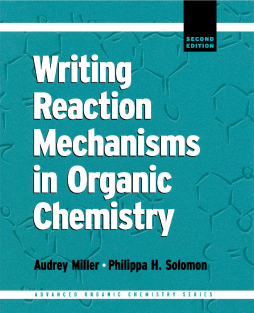
Additional Information
Book Details
Abstract
Writing Reaction Mechanisms in Organic Chemistry, Second Edition, is an invaluable guide to charting the movements of atoms and electrons in the reactions of organic molecules. Miller and Solomon illustrate that understanding organic reactions is based on applying general principles rather than the rote memorization of unrelated processes, and, in turn, emphasize that writing mechanisms is a practical method of applying knowledge of previously encountered reactions and reaction conditions to new reactions. Students and research chemists alike will find this book useful in providing a method of organizing and synthesizing an oftentimes overwhelming quantity of information into a set of general principles and guidelines for determining and describing organic reaction mechanisms.
NEW TO THIS EDITION
( Illustrated with hundreds of chemical structures, all redrawn from the first edition, with added
emphasis on three-dimensional structures and stereochemical aspects of reaction mechanisms
( Extensively rewritten and reorganized to make the presentation and format more accessible to first-year organic chemistry students, as well as advanced undergraduate and graduate students
( Chapter 6 is completely revised to streamline the treatment of pericyclic reactions, while introducing the principles underlying the symmetry operations and orbital correlation diagrams
( New appendixes in this edition contain easily referenced information on Lewis structures, chemical symbols and notation, and relative acidities of common functional groups
"This is an excellent text that should be a requirement for all students entering the organic chemistry profession. Improvements will simply make a good thing even better....The level of difficulty is appropriate for graduate students and advanced undergraduates....The overall organization is superb....The 'hints' were amazingly on target for answering some of the questions that repeatedly come up with students."
-Betty Luceigh, Professor, Department of Chemistry and Biochemistry, UCLA
"An important contribution to the chemical education field and a great seller for AP."
-Jay Siegel, Professor, Department of Chemistry, UNIVERSITY OF CALIFORNIA, SAN DIEGO
"Miller stresses a detailed pedagogically focused approach developing mechanistic pathways from fundamental chemical, physical, and electronic/molecular orbital principles....Many examples and problems are included, along with numerous literature references. Written in a clear and comprehensible style, it will serve as an invaluable supplement to both undergraduate and graduate chemistry students alike; the thorough index renders it useful for professionals as well."
-Francis Vincent Scalzi, Professor, Department of Chemistry, HIRAM COLLEGE, in CHOICE
"I think this book is quite unique and very much needed....The problems are truly outstanding....I like the idea and scope of this book very much....I am excited about using this text."
-Sheila E. Browne, Professor and Chair, Department of Chemistry,
MOUNT HOLYOKE COLLEGE
"Suitable as a text for advanced undergraduates or beginning graduate students in chemistry, assuming the knowledge obtained in a one-year undergraduate course. Detailed answers are given to all problems."
-BOOK NEWS, INC., reprinted on amazon.com.
"Overall the quality of the presentation is very good. The mechanistic concepts are explained well, the examples chosen are quite representative, and the problems are excellent."
-Donald J. Burton, Professor, Department of Chemistry, UNIVERSITY OF IOWA
